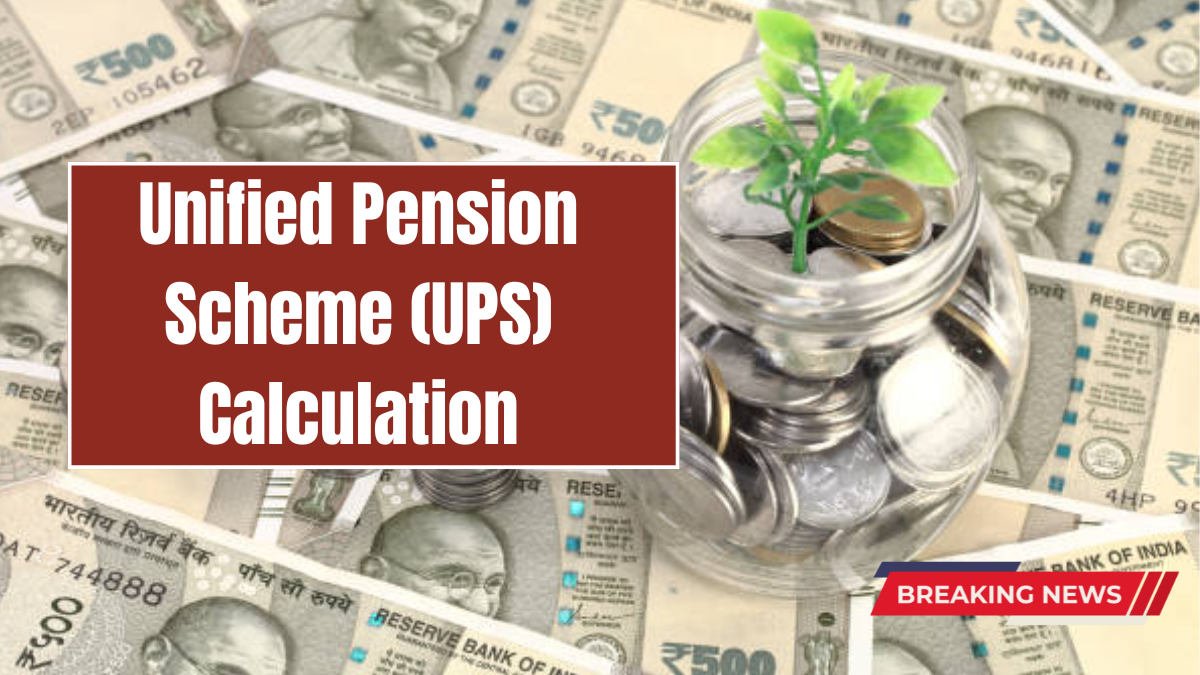The Unified Pension Scheme (UPS), launched in October 2024 and officially notified in January 2025, is a new initiative by the Australian government designed to provide employees with a secure pension, while also offering flexibility through market-linked investments. The scheme merges the benefits of the Old Pension Scheme (OPS) and the New Pension System (NPS), providing employees with both a guaranteed pension and the possibility of higher returns based on investment performance. The UPS is set to come into effect on April 1, 2025, offering a minimum assured pension and the option for employees to invest their contributions in equity markets.

Key Features of the Unified Pension Scheme
The Unified Pension Scheme (UPS) combines a guaranteed pension with the flexibility to invest in equity markets. The scheme is designed to provide financial security for employees during retirement, with various features that ensure long-term benefits.
Assured Pension Amount
A key feature of the UPS is the assured pension of ₹10,000 per month after completing 10 years of qualifying service. Employees with at least 25 years of pensionable service will receive 50% of their average basic pay over the last 12 months prior to retirement.
Flexibility in Investment
UPS allows employees to invest their pension contributions in equity markets, similar to the New Pension System (NPS). This provides an opportunity for a higher pension based on the performance of market-linked investments.
Contribution Structure
-
Employee Contribution: 10% of the basic pay, invested in market-linked programs.
-
Employer Contribution: 18.5% of the basic pay, with 8.5% supporting the pension corpus and the remaining 10% invested in market-linked programs.
Minimum Assured Pension Calculation
The minimum assured pension is calculated as 50% of the average basic pay over the last 12 months prior to retirement, provided the employee has completed 25 years of service.
Example Calculation:
-
Average Basic Pay: ₹1,00,000
-
Pensionable Service: 25 years
-
Dearness Relief (DR) Rate: 53%
Monthly Pension Calculation:
-
Pension: 50% of ₹1,00,000 = ₹50,000
-
Dearness Relief: 53% of ₹50,000 = ₹26,500
-
Total Monthly Pension: ₹76,500
Lump Sum Amount
At retirement, UPS account holders are eligible for a lump sum amount equal to 10% of monthly emoluments (basic pay + dearness allowance) for every completed six months of qualifying service.
Lump Sum Formula:
Lump Sum Amount=110×Total Emoluments×L\text{Lump Sum Amount} = \frac{1}{10} \times \text{Total Emoluments} \times L
Where L is the number of completed six-month periods of service. For an average basic pay of ₹1,00,000, the lump sum for 25 years of service would be ₹7,65,000.
Family Pension in Case of Death
In the event of the pensioner’s death, their family is entitled to receive 60% of the pension amount, including dearness relief.
Example Calculation:
-
Monthly Pension: ₹76,500
-
Family Pension: 60% of ₹76,500 = ₹45,900
-
Lump Sum: ₹7,65,000
Pension for Less Than 25 Years of Service
If the pensionable service is less than 25 years, the pension amount will be calculated proportionally.
| Years of Service | Pension (% of Basic Pay) |
|---|---|
| 20 years | 40% |
| 22 years | 44% |
| 25 years | 50% |
For example, with 20 years of service, the pension would be 40% of the basic pay instead of 50%.
Higher Pension Possibilities
If the market-linked investments perform well, employees may receive a pension higher than 50% of their basic pay. This feature encourages employees to maximize the potential returns on their investments.
Differences Between NPS and UPS
While the New Pension System (NPS) has been operational since 2004, the UPS will not replace it. Both systems will run simultaneously, and employees can voluntarily switch from NPS to UPS, but the switch can only occur once. Past retirees from NPS are also eligible to join UPS, provided their retirement occurred before the UPS operational date.
FAQs
Q1: Can employees receive more than 50% of their basic pay as a pension?
Yes, if the market-linked investments under the UPS perform exceptionally well, employees can receive a pension that exceeds 50% of their basic pay.
Q2: Will UPS completely replace NPS?
No, both the UPS and NPS will operate simultaneously. Employees have the option to switch from NPS to UPS once.
Q3: What happens if the market falls and the pension falls below the assured amount?
In such cases, the government will compensate for the shortfall to ensure the minimum assured pension is maintained.
Q4: Can family members receive a pension after the death of the account holder?
Yes, the family is entitled to 60% of the pension amount, including dearness relief.
Q5: Are past NPS retirees allowed to join UPS?
Yes, past retirees from NPS can join UPS, provided they retired before the UPS operational date.
Click here to know more.
Aanchal is a passionate writer with a keen interest in storytelling, content creation, and creative expression. She enjoys exploring diverse topics and crafting engaging narratives that captivate readers.

